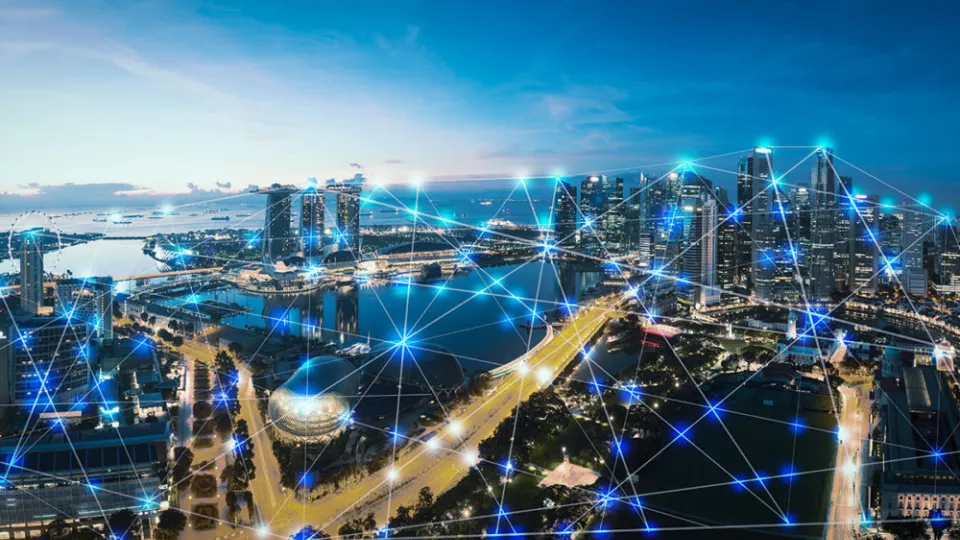To reduce electricity consumption, researchers must work with each tiny electronic detail, each individual component within memory circuits, radio circuits, etc. When savings are made in every little electronic component within communication electronics, the total benefit can even be significant for the global environment.
The number of connected devices, such as sensors, is expected to increase dramatically to tens of billions within the next five years. Within e-health, for example, increasing numbers of sensors are being developed to be placed on and in the body, continuously collecting all kinds of data about us, such as pulse rate, blood pressure and anything else that can be measured. These sensors need to be small and discreet, yet capable of gathering large amounts of data without their batteries needing to be recharged too often. In some cases, the battery needs to last for several years.
At the Integrated Electronic Systems lab at Lund University, many doctoral students have worked on developing existing low-frequency electronics with the aim of radically reducing power consumption, explains doctoral student Therese Forsberg.
“A former colleague, Oskar Andersson, developed a low-power circuit that checks the pulse to determine whether a patient has atrial fibrillation. In that sensor, he reduced the power consumption to 40 billionths of 1 Watt.”
We develop very energy-efficient memories that are also very small in terms of surface area.
Power consumption refers to how much energy is used per second and is measured in Watts (W). A mobile phone in full activity uses around 0.5 W and a laptop 10–20 W.
In integrated electronic circuits, power consumption can be reduced through several different methods. For example, electronic devices can be designed only to wake up when they are needed, while radio circuits can minimise the amount of electrical current used when the sensors communicate. It is also possible, as in the sensor developed by Oskar Andersson, to make the built-in memory circuits more energy-saving.
“Many sensors have processors that calculate things and these require internal memories for calculation”, says Therese Forsberg. Memory circuits are involved in a very large proportion of all data transfer. In a normal processor, just over 70 per cent of energy consumption is used by the memory.
Two researchers have concentrated on reducing the power consumption in built-in memory circuits: Joachim Rodrigues at Integrated Electronic Systems and his former doctoral student Babak Mohammadi.
“Babak Mohammadi’s work led to a 90 per cent reduction in the memory circuits’ energy consumption”, says Joachim Rodrigues. In total, this is a major improvement in the energy efficiency of many (digital) integrated circuits.
The idea of how to design memories for low power consumption proved so good that Joachim Rodrigues and Babak Mohammadi have now started a development company, Xenergic, together.“We develop very energy-efficient memories that are also very small in terms of surface area”, explains Joachim Rodrigues. “It is fun to see how we can take our research a few steps forward and achieve a good product.”
The expected major use of computers, sensors and other devices connected to the internet will increase pressure on computer networks and their base stations.
“All the servers in the US that transmit Google searches, Facebook and Instagram, etc., consume as much electric power as the whole of Sweden”, says Joachim Rodrigues.
Much of the energy goes to cooling the servers when they heat up. Reducing energy consumption – even by a small amount – in each part of the electronics cuts the total need for cooling.
All contributions to more energy-efficient circuits are important. Unlike previous doctoral students, Therese Forsberg is working on the electronic circuits of the future that will work at very high frequencies, as there will be no more space within the lower frequencies.
“When tackling a problem such as this, the first step is more about ensuring that the circuits function at all, rather than making them extremely energy-efficient”, says Therese Forsberg. “The second step is to improve overall performance, and that is where I come in. As part of my work, I have shown that half the energy consumption is sometimes sufficient. But in five to ten years, another doctoral student will probably be sitting here, with the single goal of making the high-frequency circuits use tens or hundreds of times less energy than they do today.”
All reductions in energy consumption are important from a climate perspective, and all those developing electronics take energy efficiency into account, according to Therese Forsberg. “However”, she continues, referring to a video from ITU (the International Telecommunication Union), “the biggest contribution that the information and communication technology sector can make to a sustainable world is to be a part of the solution within many other sectors. This could include smart dosage of nutrients within agriculture, reduced fuel consumption, monitoring of climate change, or improved digital communication between human beings.”

